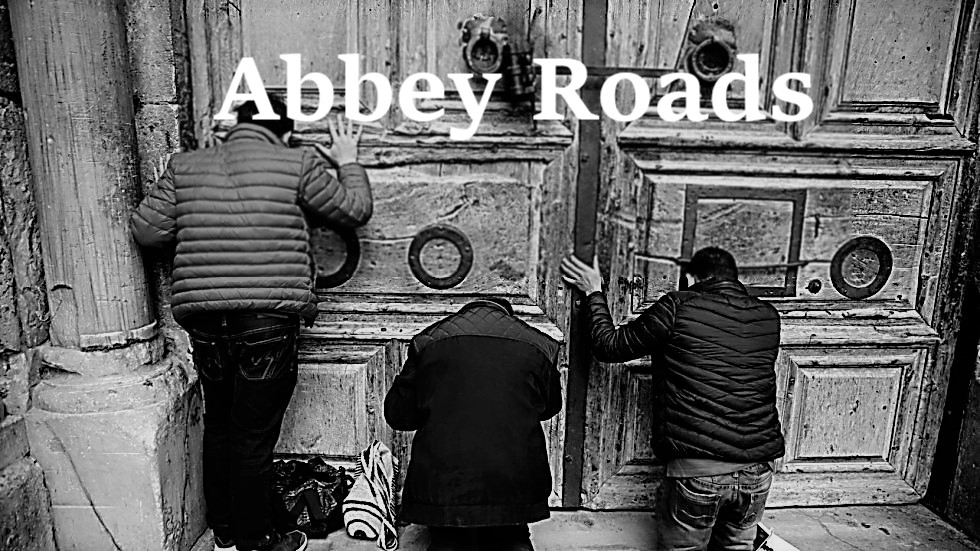 We kneel for adoration before an elaborate monstrance containing a consecrated host enclosed in a protective luna... and yet...
We kneel for adoration before an elaborate monstrance containing a consecrated host enclosed in a protective luna... and yet...The practice of receiving Communion in the hand has been an ongoing controversy amongst Catholics. Indeed, many traditionally minded Catholics sometimes support their opposition with quotes from private revelations claiming those who received communion that way undergo special punishments in purgatory. I don't know what I think about that.
.
However, Fr. Zuhlsdorf has twice posted on the subject of Communion in the hand in the past several days, with the inclusion of documentary photos of the effects. The photos are compelling arguments against the practice. (You will immediately notice how the hands turned black... KIDDING! I'm so kidding.)
.Despite the fact that the practice is approved by most of the Bishops of this country, I prefer to receive on the tongue while kneeling - although it is not always easy to do in some parishes.
.
Art: St. Pascal Baylon - Mexican retablo

It's a simple matter of respect, and recognizing the diverse traditions surrounding communion that have been present in Christian communities through millenia. Whether one likes it or not, communion in the hand holds a place in our tradition, as well as other ways of receiving.
ReplyDelete"not always easy to do in some parishes"
ReplyDeleteI'm with ya, brother. As the years go by, it's harder to get up from kneeling without having the rail to grab onto! :-)
For well over 1500 years, until 40 years ago, tradition was Communion on the tongue. Communion in the hand then began as an indult. Revisionists are busy at work examining everything since V2, but my opinion is that this practice was a mistake, because the net effect is that an entire generation of Catholics have been raised on a protestant conception of the sacrament. You have to wonder how many Catholics believe in the Real Presence. It's still possible to receive Communion with much reverence in the hand, but given the choice, I don't know why very many people would elect to, considering the particles that are left to deal with.
ReplyDeleteThanks for the good comments folks - thanks for supplying that information Michael.
ReplyDeleteI agree with Thom that "..whether one likes it or not, communion in the hand holds a place in our tradition, as well as other ways of receiving." In the early centuries of the Church, Communion was certainly not always and at all times received on the tongue. And yes, we can receive, reverently and with faith in the Real Presence, on the hands. Of course our hands aren't worthy, but are our tongues any more so? Personally I commit way more sins with my tongue than I do with my hands. And since we receive Jesus into our hearts, isn't the holiness within more important than the part of our body which first receives Him?
ReplyDeleteThis controversy never seems to go away, and I doubt that Communion in the hand will ever be prohibited, nor will the ordinary form of Mass.
ReplyDeleteI think it is a matter both taking vs receiving and also a sense of Whom we are receiving has been lost.
ReplyDeleteJust the possibility of the smallest particle of the Eucharist being cast to the ground and trampled upon should be enough for any Catholic to adjust to receiving on the tongue.
I recieve on the tounge after genuflecting unless I have a eucharistic minister, which I try to avoid when I can.
ReplyDeleteWhen Roman Catholics go to Holy Communion, they are there to RECEIVE the Body (and the Blood) of the Lord Jesus Christ from the priest or duly appointed minister. They are not there to TAKE the Body of the Lord Jesus Christ.
ReplyDeleteThat is the principal reason that "self-intinction" (the recipient taking the Host and dipping it into the chalice of the consecrated Precious Blood) is absolutely forbidden. Only an ordained minister (priest, deacon or bishop) may intinct the Host before placing it in the mouth of the recipient (sometimes as in the Byzantine rites, with a tiny spoon).
Unfortunately I am aware of two parishes in our archdiocese where self-intinction is allowed; one where they place the chalice off to the side and the individuals walk over to it and "self serve" themselves.
I haven't been back to those two parishes since I observed that.
One could indeed make a case that Communion in the hand is a "taking."
Within the past few years I began taking Communion from a priest or deacon on the tongue. I was fearful that EMHC's might not be experienced enough to do it properly without an accident. But a couple of months ago I abandoned "in the hand" completely. There was one "almost" accident, but most have gone well.
This comment has been removed by a blog administrator.
ReplyDeleteHello, I hope you are not offended, but I need to remove your comment. Two things I never tolerate is joking about the Blessed Sacrament or the Blessed Virgin. I'm sorry.
ReplyDeleteTerry Nelson